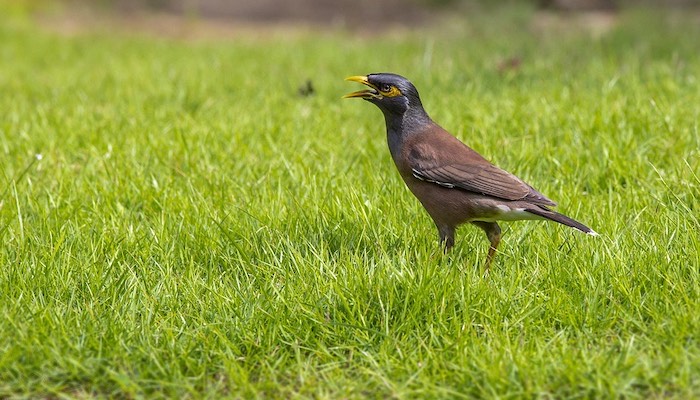
Muscat: The Environment Authority has issued a statement about the periodic crow, and the common myna and confirmed that these birds moved to the Omani environment from other countries.
“The Environment Authority has followed up what is being circulated on social media about the damages of invasive alien birds, especially the periodic crow (Indian crow) and the common myna (Myna bird). The authority extends its thanks to all members of society for their keenness to preserve the ecological balance in the Omani environment, and would like to clarify the following:
- Species of invasive exotic birds (the common raven and the common myna) moved to the Omani environment through other countries, and are currently spread in many cities of the region and the world, especially those that have ports. India is the original home of the periodic crow (Indian crow), which travels with ships. The common myna (Myna bird) is native to India, Afghanistan and the countries of Indochina, and it was brought to one of the countries of the region as an ornamental bird and then began to spread to many cities in different countries, including the Sultanate of Oman.
- Invasive alien birds have done great damage to the ecological balance and agricultural crops and others, and are considered a major challenge facing many countries of the world, and there are countries that began to fight these birds decades ago, but did not succeed in eliminating them, although they are considered one of the biggest threats to the safety of biodiversity.
- These species inhabit areas with large residential communities such as cities, which have a high tree density for two reasons, the first is the presence of tables represented in garbage containers and foods thrown in the open, and the second is the availability of trees that shelter to them in the evening and in large numbers and nest inside them. These types of birds nest mainly in the trees of public and private facilities and farms, and large trees close together planted on the corners of the roads, and are active during the day to obtain food in places to throw foods (traditional landfills and garbage containers) and ports and near homes where you may find some foods, insects and other birds, and they are found in cities mainly it is also found in smaller numbers in some mountainous and plain areas adjacent to cities.
- The Sultanate of Oman is making great efforts to confront this bird, and a national team of competent authorities has been formed to develop an action plan to manage and combat invasive alien birds. An international expert has also been contracted to benefit from the management and control experiences that have been applied in other countries through the International Union for Conservation of Nature.
- Specialists in the Sultanate of Oman conducted a study on the behaviour of these types of invasive birds and it was found that they are sharp-tempered, intelligent and exclusionary, and a number of control methods were tried, including setting up different forms of cages, and providing different types of food. Birds do not enter the cages set up for them, but wait for other birds to enter, as well as for foods, they do not feed on them before other birds because of their intelligence.
- The authority is currently preparing to launch a campaign in cooperation with public and private bodies and specialists to implement several ways to combat and manage these species, which will be in cooperation with community members and voluntary teams.
Accordingly, the authority calls on all institutions and individuals to cooperate in order to combat these types of invasive birds, the first of which is not to throw food, whether in traditional landfills or garbage containers, in ports and near homes, with the need not to use fire for the sake of public safety and in compliance with laws and regulations.